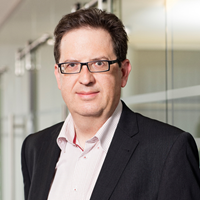Approach
In order to get a clear view on the current situation, Möbius executed an intensive audit by interviewing key players, analysing the processes and studying in depth the cost allocations. Based on these elements, together with Sterima the industrial footprint of the 'to be' situation has been developed in order to realise its strategic long term goal:
-
Develop cost allocation and pricing model : Identify the most relevant cost drivers for the different activities and evaluate the ideal size for a sterilisation plant (finding the right equilibrium between economy of scale for operations, logistics and service aspects).
-
Evaluate market potential : To evaluate the potential of the new footprint, six hospitals were contacted to evaluate the possible impact on their specific situation if they would outsource their sterilisation operations.
-
Build a business case : Based on the findings of the audit phase and market information, the business case for the 'to be' industrial footprint was developed and used for the board of directors to take the right investment decision.
Results
-
Design of the optimal industrial footprint for new sterilisation plants (size, geographical scope, …)
-
Development of a pricing strategy based on ABC cost drivers of the operations
-
Building business cases for outsourcing for six hospitals
-
Building a business case for required investments to present to the board of directors










